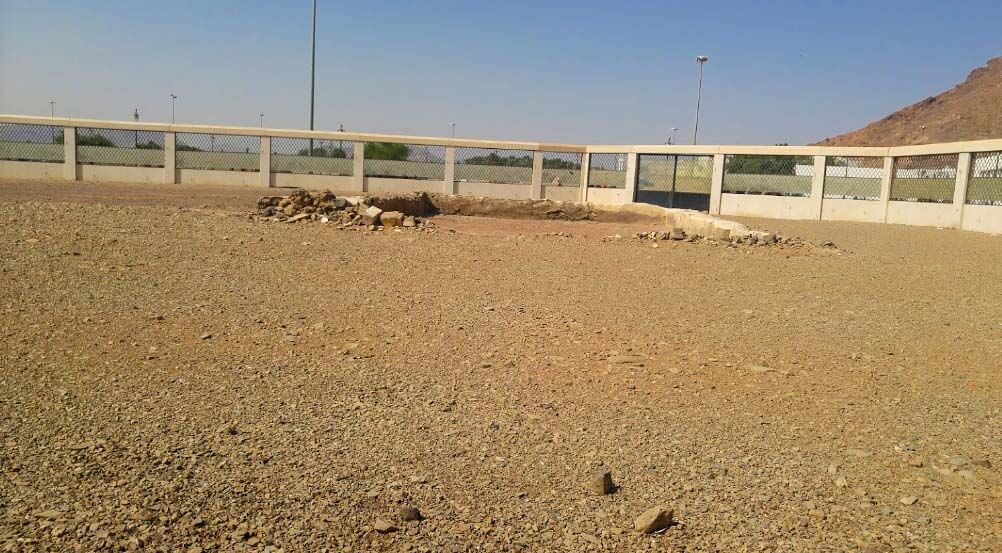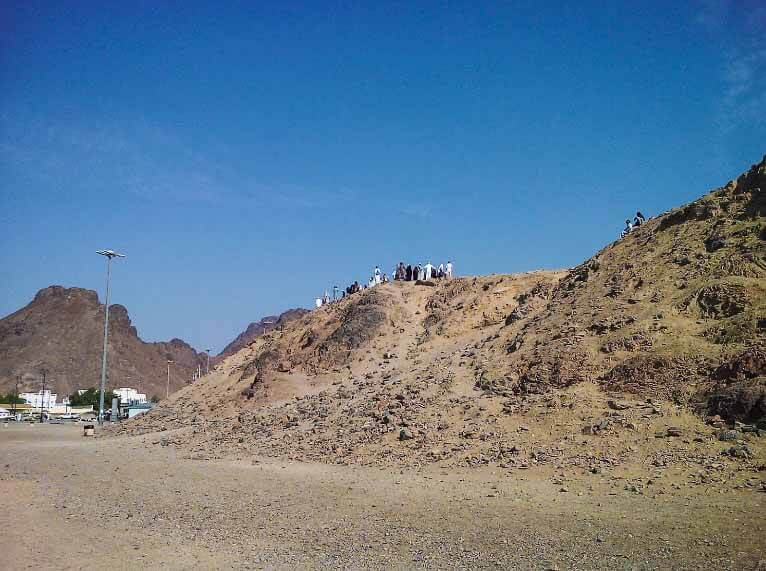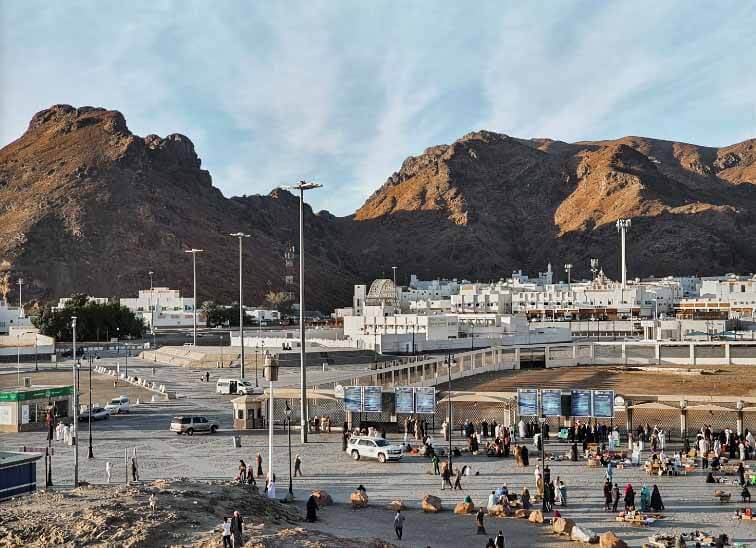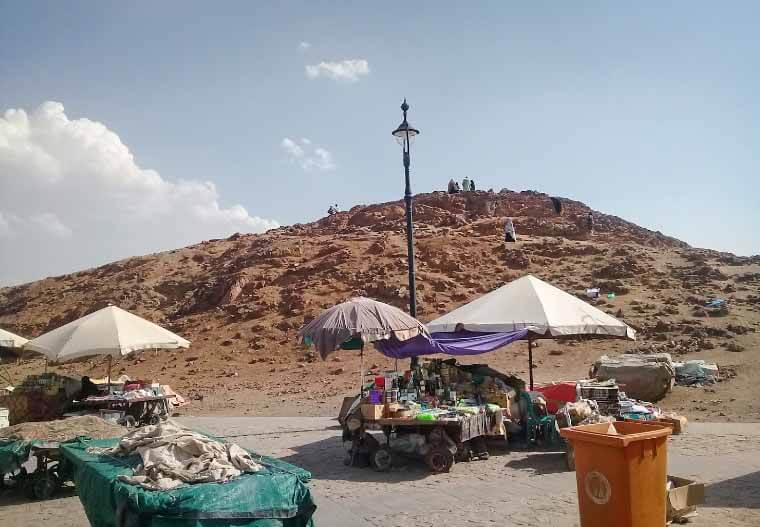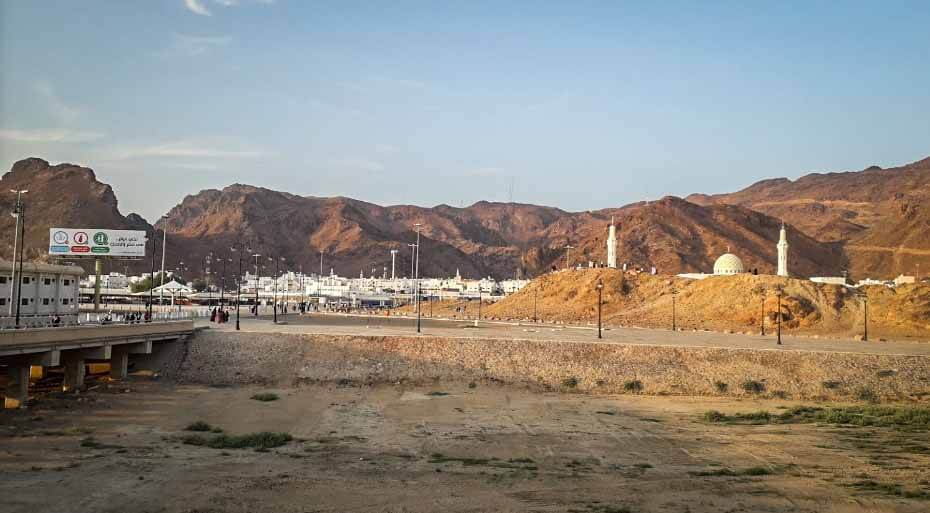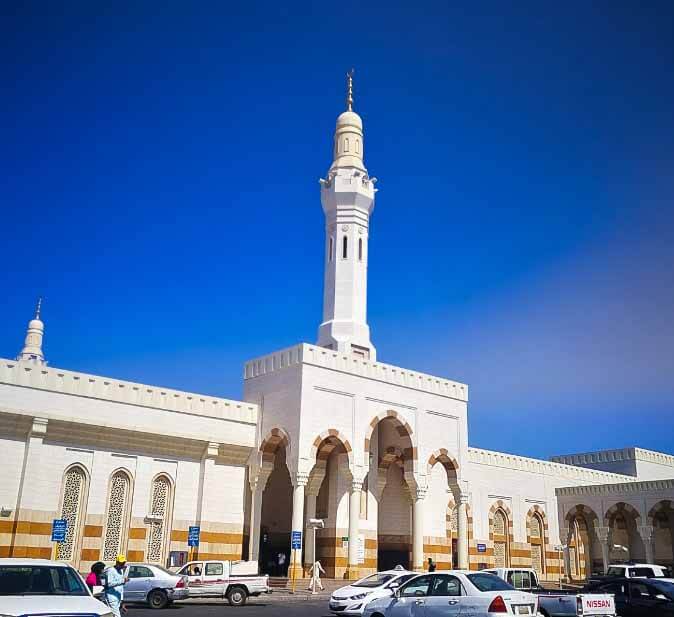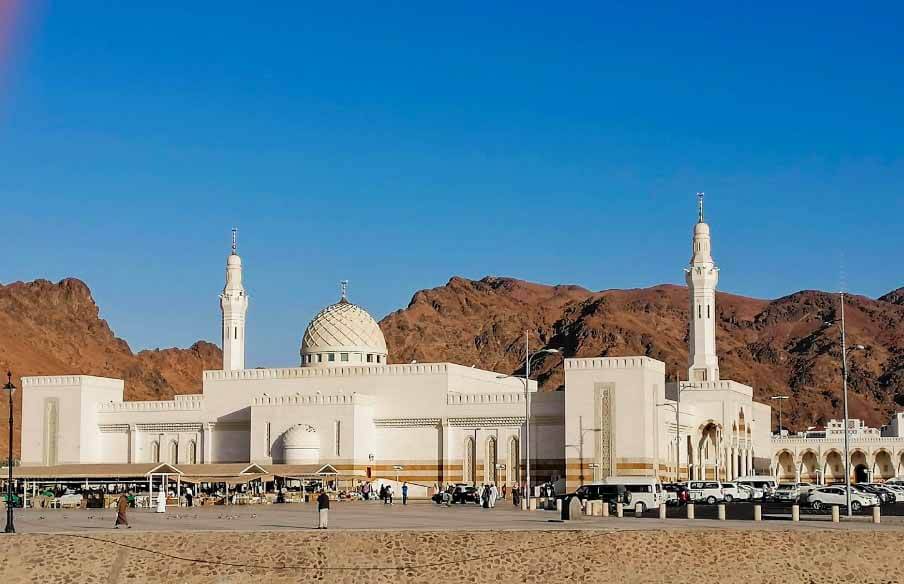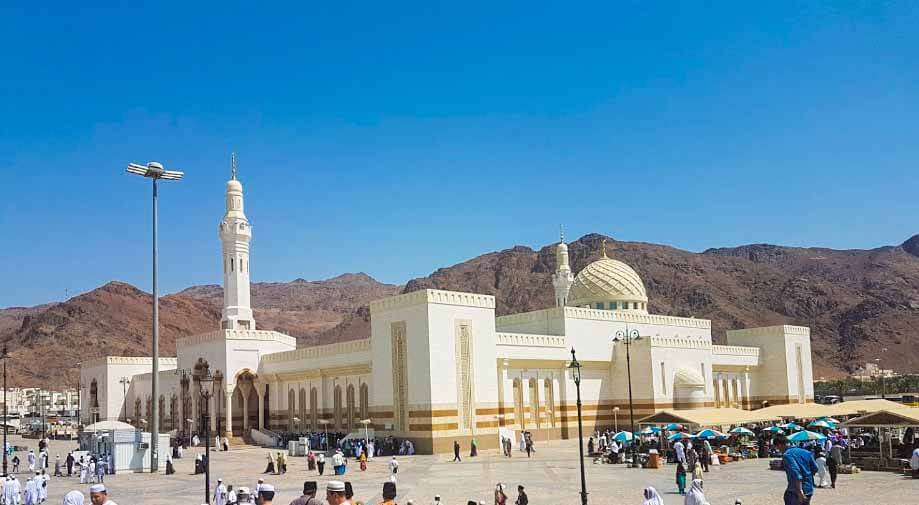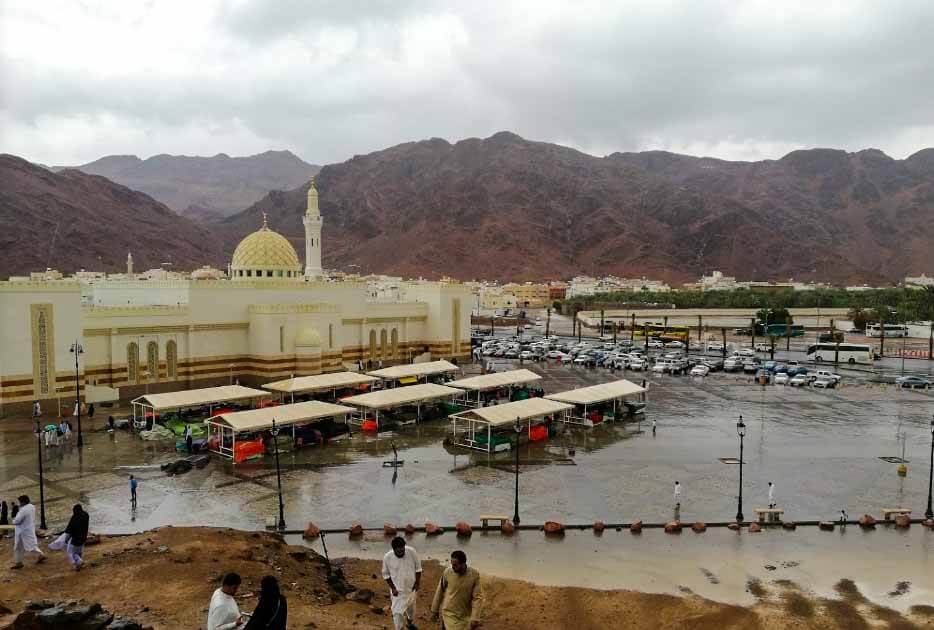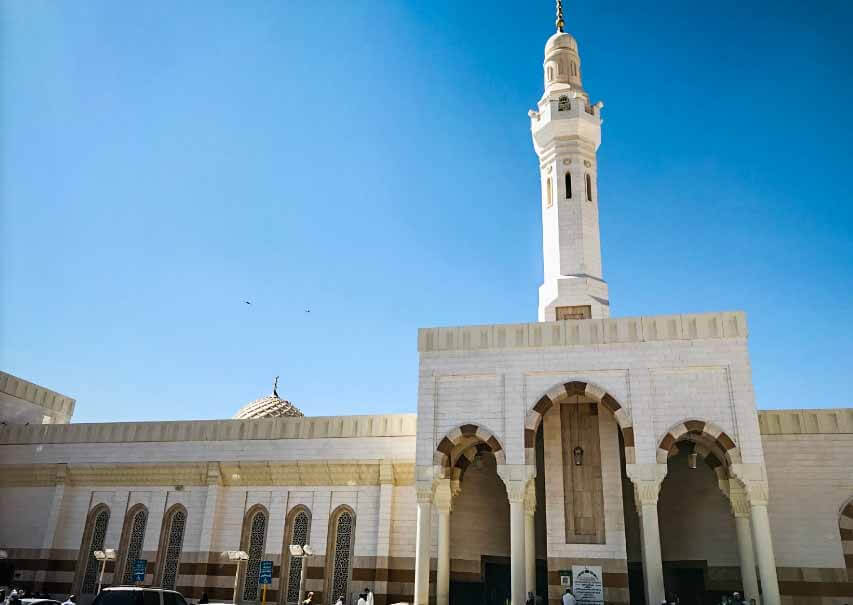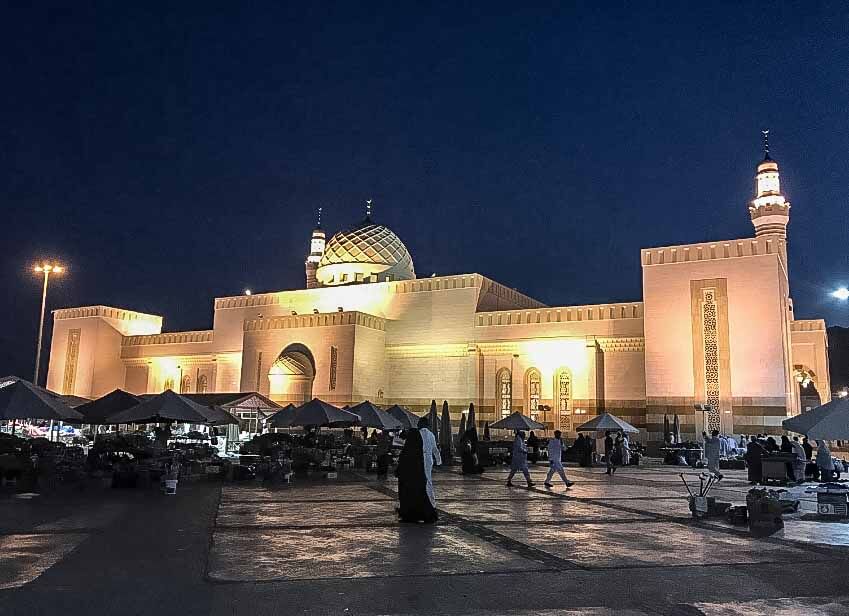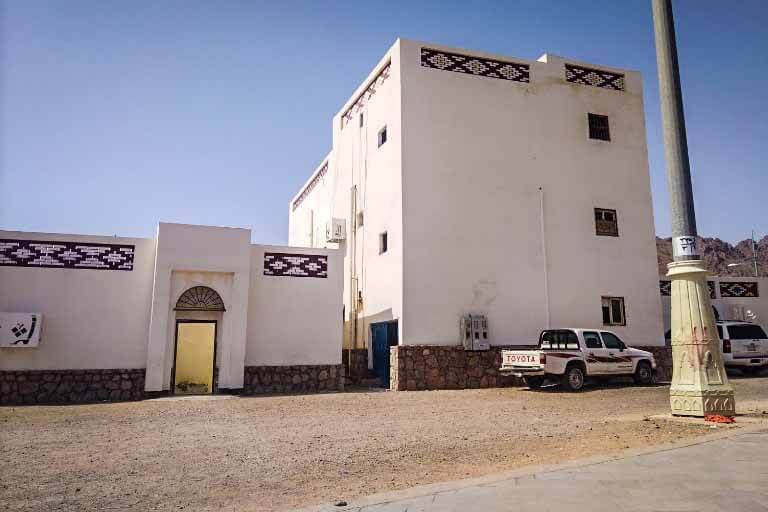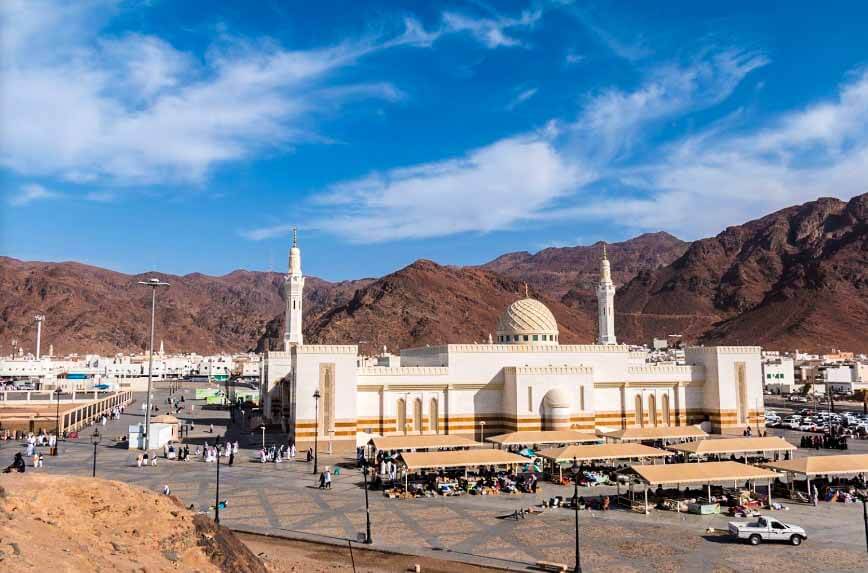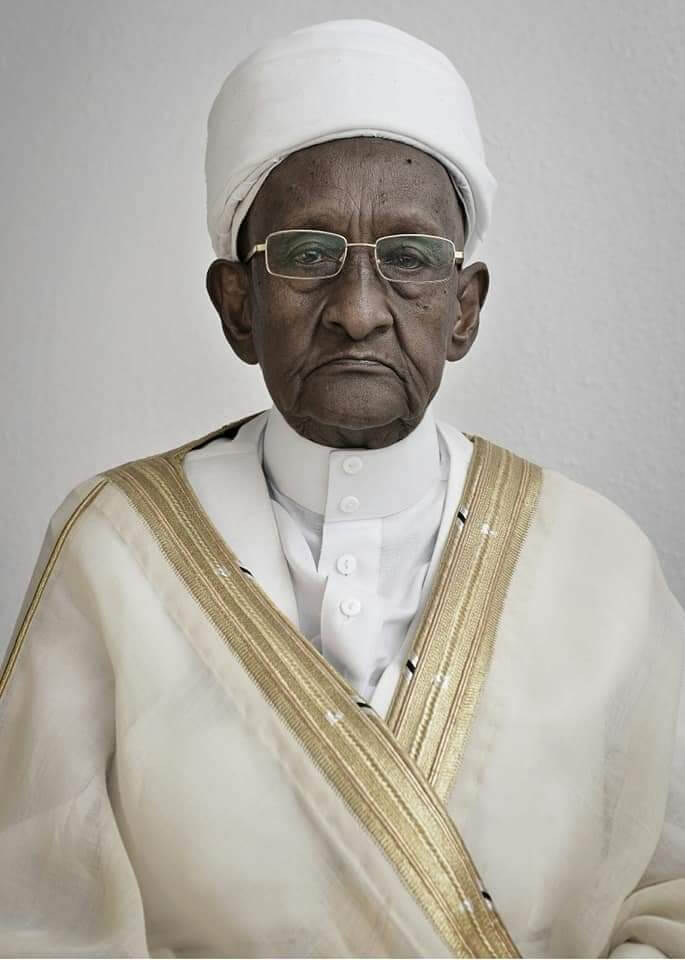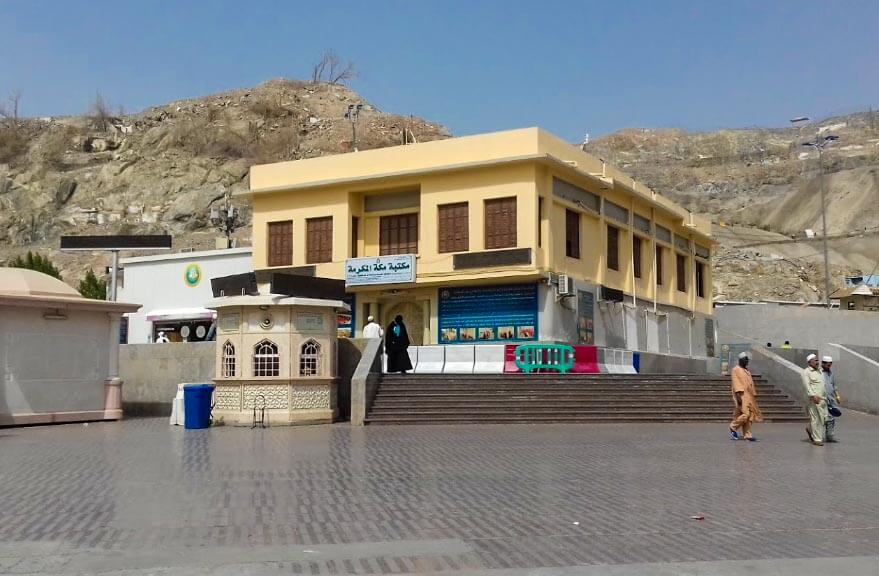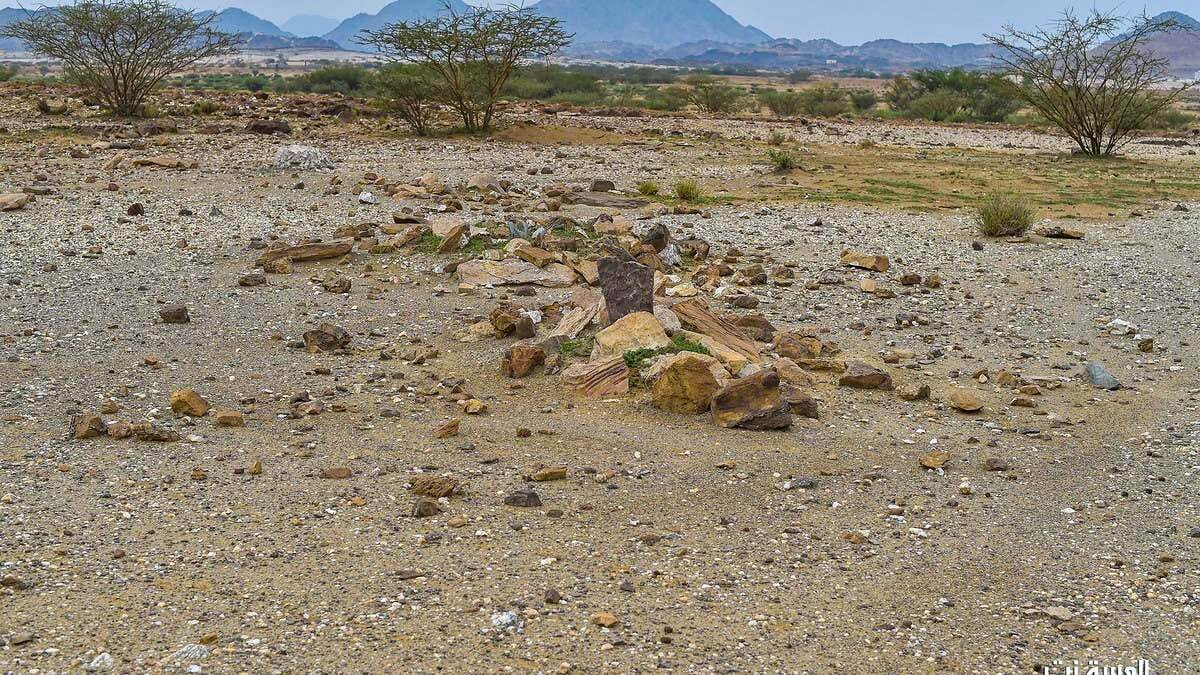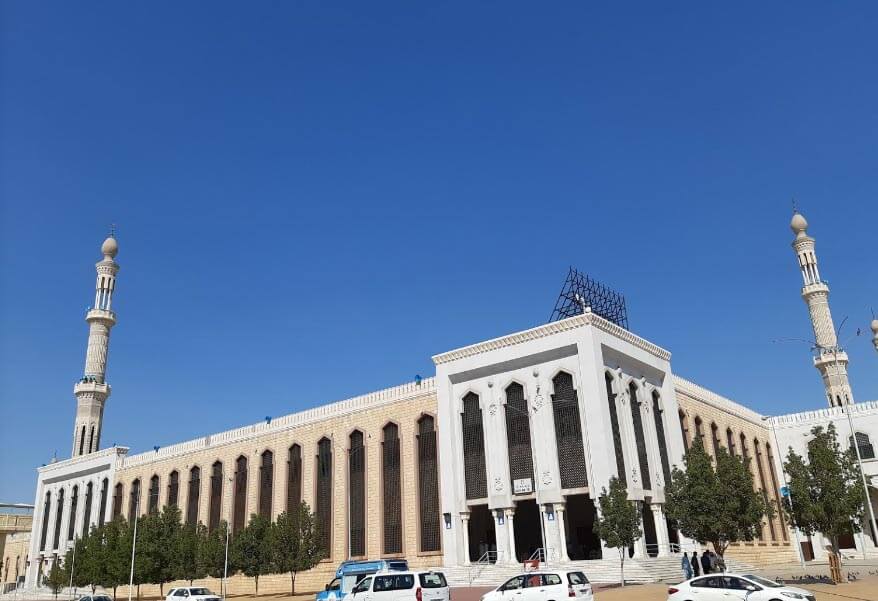Sayyid al-Shuhada, Medinah Sharif – Saudi Arabia
Battle Site and Grave of Sayyid Ush Shuhada Hz. Ameer Hamza رضي الله عنه
Archers Hill
Masjid Sayidul Shuhada
Coordinates: 24.503847, 39.611727
The Battle of Uhud (Ghazwat Uhud) was fought on Saturday, 23 March 625 CE (7 Shawwal, 3 AH), in the valley north of Mount Uhud.
The Qurayshi Meccans, led by Hz. Abu Sufyan ibn Harb رضي الله عنه, commanded an army of 3,000 men toward Hz. Prophet Muhammad’s ﷺ stronghold in Madina sharif.
The battle was the only battle throughout the Muslim–Quraish War in which the Muslims did not manage to defeat their enemy and it came just nine months after the Battle of Badr.
Abu Sufyan became the de facto leader of the Quraish after the death of Abu Jahl at Badr nine months prior.
Wanting to avenge the Meccan’s losses at the Battle of Badr, he marched upon Madinah from Makkah on 10 December 624 CE with a force three times stronger than that of the Meccans at Badr.
The Battle of Uhud was the second military encounter between the Meccans and the Muslims and the first one in which the Muslims were on the defensive side.
The Muslims readied for war soon afterwards and the two armies fought in the valley below the northern face of Mount Uhud.
Although outnumbered, the Muslims gained the early initiative and forced the Meccan lines back, thus leaving much of the Meccan camp unprotected.
When the battle looked to be only one step away from a decisive Muslim victory, a serious mistake was committed by a part of the Muslim army, which altered the outcome of the battle.
A breach of Hz. Prophet Muhammad’s ﷺ orders by the Muslim archers, who left their assigned posts to despoil the Meccan camp, allowed a surprise attack from the Meccan cavalry, led by Meccan war veteran Hz. Khalid ibn al-Walid رضي الله عنه, which brought chaos to the Muslim ranks.
Many Muslims were killed, and Hz. Prophet Muhammad ﷺ himself was severely injured.
The Muslims had to withdraw up the slopes of Uhud. The Meccans did not pursue the Muslims further but marched back to Mecca declaring victory.
For the Muslims, the battle was a significant setback. Although they had been close to routing the Meccans a second time, their breach of Hz. Prophet Muhammad’s ﷺ orders in favor of collecting Meccan spoils reaped severe consequences.
The two armies would meet again in 627 CE at the Battle of the Trench, in which the Muslims would, yet again, have to defend Madinah from the Meccans and others.
Sayed al-Shuhada (Medina Sharif)
Sayed al-Shuhada is a small area in the Uhud Valley, where the second battle of Islam was faught between the Muslims from Medina and the Meccan forces. Today the area has a population of almost 15,000 and has several points of interest including Sayed al Shuhada Mosque and burials of Uhud Martyrs.
The area of Uhud’s Martyrs, known as the Sayed al-Shuhada, is a small neighbourhood of Medina city, situated some 3.5 kilometers north of Masjid an-Nabawi.
It was extensively renovated circa 2017/2018, with a new mosque, access roads, pilgrims interest points and services and administration areas.
The area of the site is 340 hectares, and the area contains the Martyrs Square, which includes Jabl al-Rumah, historic cemeteries, the mosque, a school, parking lots, the civil services building.
The area is named as Sayyid al-Shohada after the title of Hz. Hamzah ibn ‘Abdul Muttalib رضي الله عنه, who was granted this title after his Shahadah during the battle of Uhud on 22 March 625 CE (3 Shawwal 3 hijri) when he was 59 (lunar) years old.
Hz. Hamza رضي الله عنه was buried in the same grave as his nephew Hz. Abdullah ibn Jahsh رضي الله عنه.
Jabal al-Rumah (Archer’s Hill)
Jabal al-Rumah (جبل الرماة), the peak or hill of the archers, Before the battle, Hz. Prophet Muhammad ﷺ had assigned 50 archers on a nearby rocky hill at the west side of the Muslim camp.
This was a strategic decision in order to shield the vulnerable flanks of the outnumbered Muslim army.
Hz. Prophet Muhammad ﷺ positioned archers and instructed them not to move regardless the outcome of the battle, but they absconded their positions; which resulted in a catastrophic defeat for Muslim forces.






